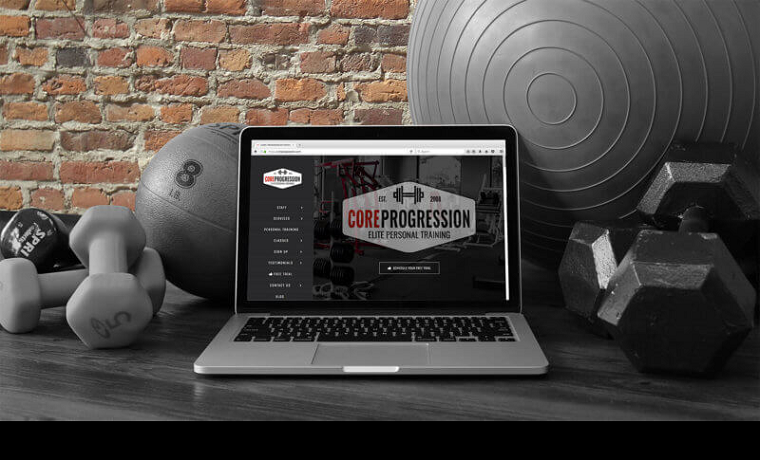The global revenue for the health and fitness industry is nearly $100 billion according to Statista. There are more than 200,000 health and fitness clubs across the world, and in the states alone, there are around 340,000 personal trainers actively working. This competition means they must market themselves to their full potential.
It is widely accepted that most businesses should have some form of internet presence today. Websites help with brand awareness, grow audiences, increase customer loyalty, and simply help potential customers or clients locate a business.
If you are a personal fitness trainer looking to create a website, or you are a developer building one for a client, you will need to understand what should be included.
How should the website be built, and why?
The first question for any fitness trainer wanting a website would be about their budget, design skills, and schedule. If an individual wanted to build their site themselves without coding skills, then the easiest way would be through a page builder such as WordPress.
If the skills or time are lacking, and the budget is available, then there are many reasons why you should hire professional web design services. If you are a fitness trainer, then you will understand that you have unique skills that clients appreciate, and a web designer has their own set of talents too.
A web designer will be able to sit with the client and discuss their requirements before designing a custom-made site without the use of templates. A website made this way will have cleaner code than one made through WP or Wix, and should perform much better.
The design of a fitness trainer’s website
The design of a website is quite a personal choice, and what one visitor engages with, may put another off. When it comes to fitness trainers, the designer will need to remember that this is a customer-facing, possibly one-on-one business, and therefore the site should reflect this.
The images should reflect friendliness and make the trainer seem personable. A good color scheme, coupled with a simple, clean design that lets the images and copy do the work will help to engage visitors.
Video is known to hold visitor’s attention for longer than copy or images can, so relevant, high-quality clips can work wonders when attracting clients. There have been many innovations in health and fitness, but YouTube and online videos have become one of the most useful for personal trainers.
Include a clear call to action above the fold, a strong image on the landing page, and simple navigation.
What should be included in the site?
When it comes to content for a fitness trainer website, some areas must be included.
- Services
- Bookings
- Contact details
- Opt-in email list
- Links to social media
- Logo
- Description about the trainer
- Blog
- Fitness and health tips
A list of services and prices is important so that you can turn your visitors into leads, and hopefully sales. Don’t be tempted to include ‘sign up’ or ‘buy now’ buttons. You first want to build interest, then trust, and after the bookings will come.
Make a live bookings page so that classes and sessions can be easily made. If you would prefer not to, then make sure there are clear contact details. Also, add in an option to join your email list, and links to social media accounts. This will improve your online following and help brand loyalty.
When you are deciding on your name and logo, think carefully. Once you start using your domain name you may be stuck with it forever. Short, relevant, memorable, and catchy, are good ideas. Use a professional for your logo design, it will be worth the expense over time.
Getting the right content for a fitness trainer site
You will need to provide a description of the fitness trainer, their background, how many years of experience they have, and some other details. The content of the website will help to make or break it and will affect not only search engine results but also how a visitor sees the fitness trainer. A fitness trainer is going to work closely with a client, so the website must give an image that they are approachable, friendly, professional, and trustworthy.
The next important area is the blog. Adding a fitness-related blog that is regularly updated with relevant posts and images, can help improve search engine results and customer retention. You are more likely to have returning visitors if there are some interesting new posts each week.
Health and fitness tips are another way to get more visitors and retain existing ones. By giving away free ideas, tips, and training methods, you are adding value to your brand. You can showcase changes in the fitness world such as smart scales that help monitor BMI as the FitTrack scale does. Or, you can post videos of how to do certain exercises properly at home or weight loss tips.
Making the site work properly
Once the site is built you will need to make sure it actually attracts visitors. As a fitness trainer, is likely to be working in a limited radius, local SEO will be important.
Fitness trainers have little or no need for international clients so SEO should be focused on attracting nearby clients. The developer will also have to be aware of changing trends in SEO and the new Google Core Web Vitals which monitor website performance.
Summary
To make a successful fitness trainer website it should show clearly the personality and experience of the trainer. A clean design with useful content including videos will help engagements.
A blog and free fitness trips will increase loyalty and keep visitors returning. Very importantly, list all the services offered and make it easy for a potential client to make contact for more info. Worry less about sales and more about building trust and then the bookings will come naturally.

